Tested: 2025 Mazda CX-70 PHEV Is Stuck in the Middle with Two

Typically, if you want a two-row SUV with the extra cargo-carrying capacity of a three-row, you must suck it up, buy the latter, and just live with stowed seats eating up a bit of that space. But not at Mazda. In creating the two-row CX70 hybrid, the Japanese automaker took its largest SUV, excised the rearmost seats, and—well, actually, that's about it. But just as the 2025 Mazda CX-70's provenance is one of compromise, the result feels equally full of concession.
Fewer Seats, Same Performance
The Mazda CX-70 is, quite literally, a CX-90 without the extra seats. The mid-size hybrid's body is no different—even inside, where cargo capacity is an identical 40 cubic feet behind the second row and the same 75 cubic feet with the rear seats stowed (that's compared to a CX-90 with a two-seat third row; next to a CX-90 with a three-seat third row, the CX-70 has one more cube). Heck, even the cabin's cargo-hold panels still retain the third-row cupholders. After all, groceries and baseball equipment must have their thirst quenched on occasion too. Thankfully, aside from that oddity, the CX-70 interior is delightfully upscale and full of materials that are interesting to both gaze upon and touch. Par for the Mazda course there.
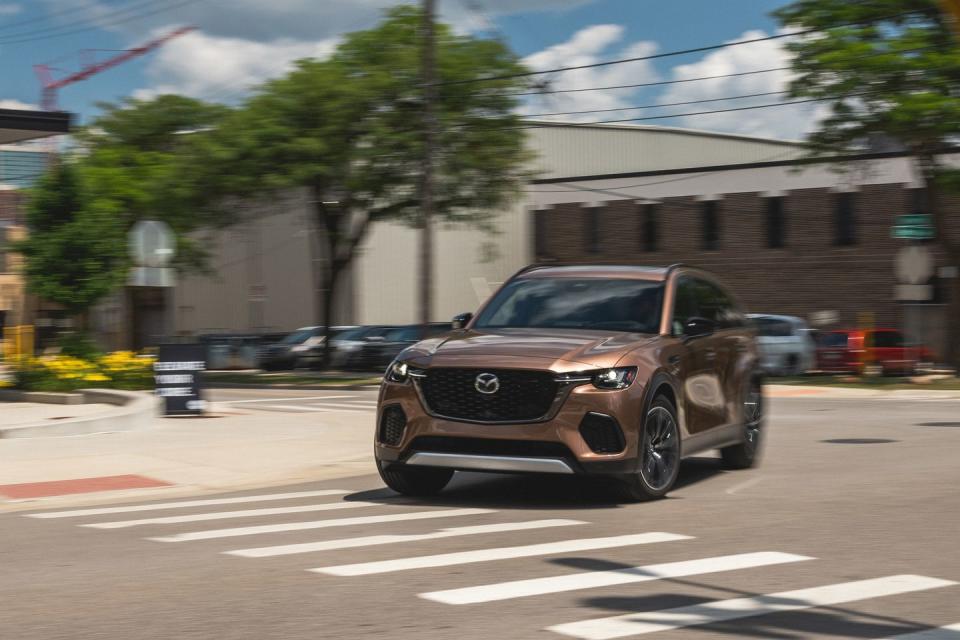
It shouldn't come as a surprise that the CX-70's copy-paste job extends beyond its hard-plastic inner walls. Our top-trim CX-70 test car also relies on the same plug-in-hybrid powertrain as its sibling. A 189-hp 2.5-liter inline-four pairs with a 173-hp electric motor nestled between the engine and its eight-speed automatic transmission. Net output is the same as the CX-90 PHEV: 323 horsepower and 369 pound-feet of torque. Even the battery is the same, with an estimated usable capacity of 14.8 kilowatt-hours.
Expunging the third row has a negligible weight difference—the CX-70 is just 52 pounds lighter on our scales—and thus the two Mazdas are nearly equally matched in performance as well. Both models required 5.9 seconds to reach 60 mph in our testing, and both crossed the quarter-mile mark at 97 mph, although the CX-70 got there 0.1 second quicker (14.4 seconds versus 14.5). The CX-70's 0.82-g skidpad run is within a rounding error of the CX-90's 0.83 g. Braking is nearly even too, with the CX-70 adding five feet to the CX-90's 166-foot result.
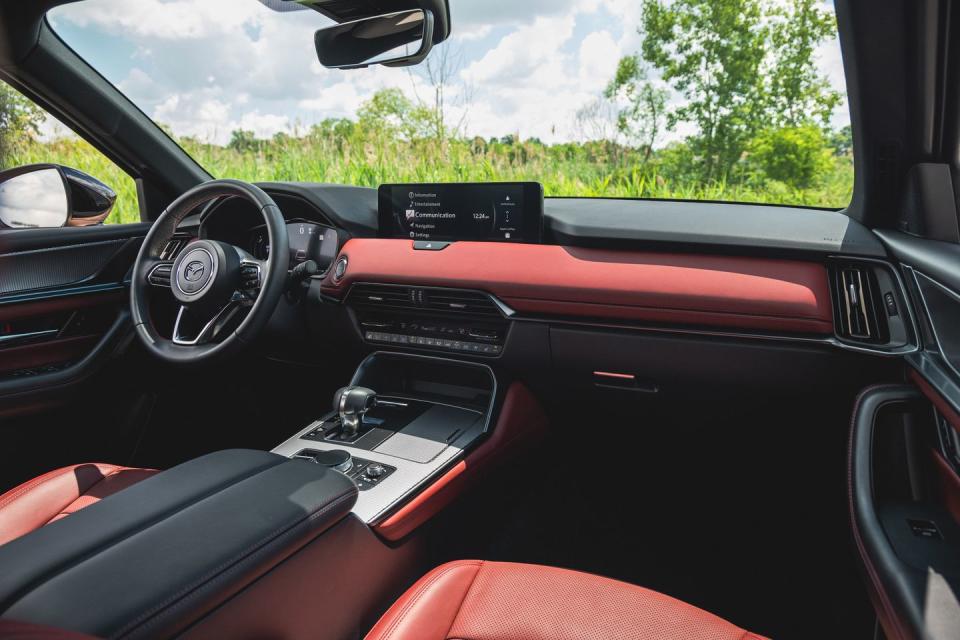
What these numbers translate to is a two-row hybrid SUV that feels more than a little porcine. The CX-50, by contrast, is a true two-row mid-sizer, and its properly proportioned footprint makes it way more rewarding to drive than the CX-70. The PHEV's bulk is down low, so it doesn't feel top-heavy, just regular heavy. Throw Mazda's surprisingly overweight steering tuning into the equation, and at no point is a CX-70 driver unaware of the mass hulking underfoot.
Sadly, we didn't get a chance to run the CX-70 through our usual highway fuel economy test. But given the CX-70's near-copycat job of the CX-90, we expect roughly the same performance. That would mean about 26 miles of electric-only range and about 28 mpg at a steady 75 mph. That's the same fuel economy we clocked in a CX-50 Turbo, which is smaller and carries less cargo, so moving up to the CX-70 won't make one's time at the pump any worse on the wallet.
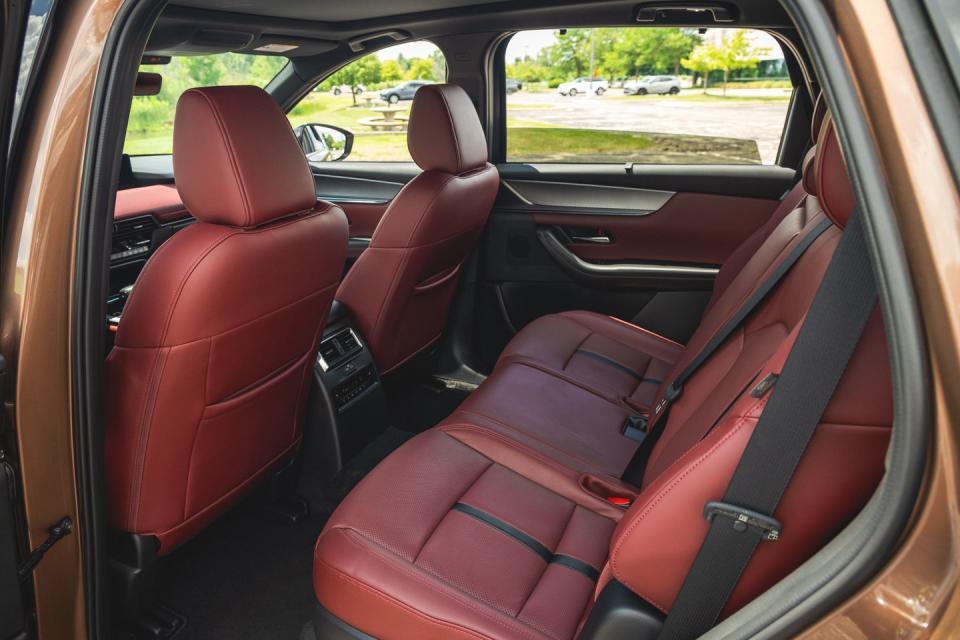
A Puzzling Powertrain
Mazda's plug-in-hybrid arrangement isn't as smooth as others. Some of that comes down to packaging. In the CX-70, the electric motor lives between the engine and eight-speed transmission. That means e-motivation must go through the transmission, a largely uncomfortable experience that ruins the consistent, effortless, off-you-go vibe a single-speed electric motor provides. You don't know when the EV gear changes are coming, but they will, and they're all bad.
We also discovered a strange powertrain interplay in one specific scenario. As you wrap up second gear at wide-open throttle, the cabin will fill with a deep, loud resonance just before shifting to third, but only sometimes, and never outside that situation (as far as we could determine). And unlike our sense of self-importance, this isn't imaginary: The clamor registered at 85 decibels on our microphones, a far cry from the 79 decibels we reported during normal WOT sound testing.
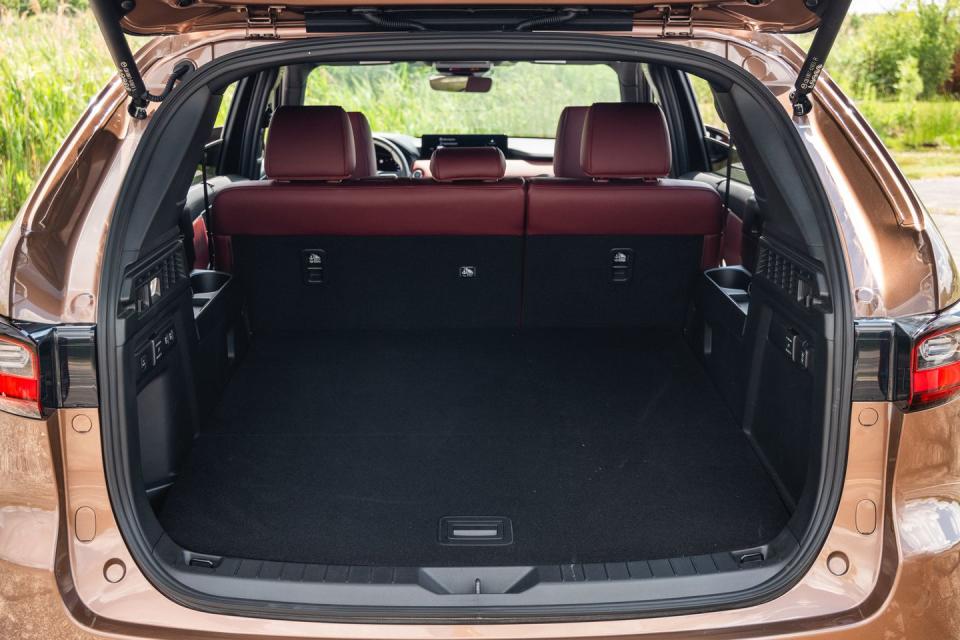
The pedals could use a little bit of tuning too. The throttle is a tricky one. Tip-in behavior is too jumpy, but it's better to have the internal-combustion engine kick in sooner; if you need to call it up mid-drive under EV operation, the whole process takes about two Mississippis, so you spend far too much time with the throttle buried and nothing to show for it. The brake is also touchy at the top end, but it blends friction and regeneration nicely later in the throw, and we found it easy to modulate in traffic past the initial bite.
In general around-town driving, like what we imagine most CX-70 buyers will do with their cars, it's a perfectly fine conveyance. The dynamic power gauge makes it easy to stay in EV mode as desired, and it shows you the exact point where your right foot will engage the internal-combustion engine. The changeover is far from graceful, but once every part of the powertrain clocks in for work, things don't feel as clumsy.
Some PHEVs don't let you charge the battery an appreciable amount while out and about. Which is fine—plugging in is really the way to go—but having the option doesn't hurt, and Mazda is happy to oblige. All it takes to do so is a quick press of a center-console button. And, unlike others, Mazda even lets you set a max charge percentage, so if you only need the last half of the battery to make it home from the highway, you can ask the system to charge and hold only that much in reserve. Don't expect speedy charging though; since the engine still has to motivate the CX-70, it only siphons off a bit of power to juice up the battery, which means you might only add a few miles of EV range in an hour of highway driving.
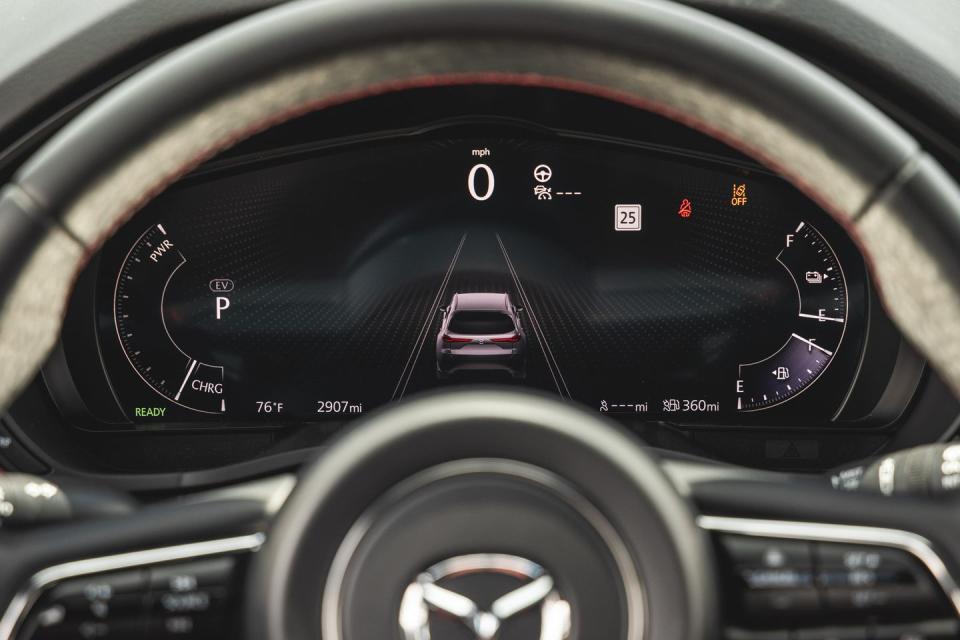
Dollars and Sense
If you were hoping that the CX-70 PHEV would split the price difference between the CX-50 and the CX-90 hybrid, consider your hopes dashed. As of this writing, the most expensive CX-50 starts at $44,720, while the cheapest CX-90 Preferred PHEV will set you back $51,400. But the CX-70's two available plug-in trims—the $55,855 Premium and $58,905 Premium Plus—cost the same as the commensurate CX-90 PHEV trims. C'mon, Mazda, you can't even throw us 50 bucks for skipping the extra seats? (The CX-70 has five gas-only trims between $41,900 and $57,405.)
Mazda's marketing department may have won the war to make the CX-70 its own model, instead of a simple option box for the CX-90. No matter, the CX-70 is sort of a weird in-betweener. It's a two-row SUV with the space of a three-row, and that extra capacity could be a huge boon to families who haul things more often than people. However, the CX-70 is more unwieldy than a properly sized two-row, and deleting the third row doesn't free up any appreciable storage space, although it does limit you to five occupants max. For better or for worse, there's nothing quite like it.
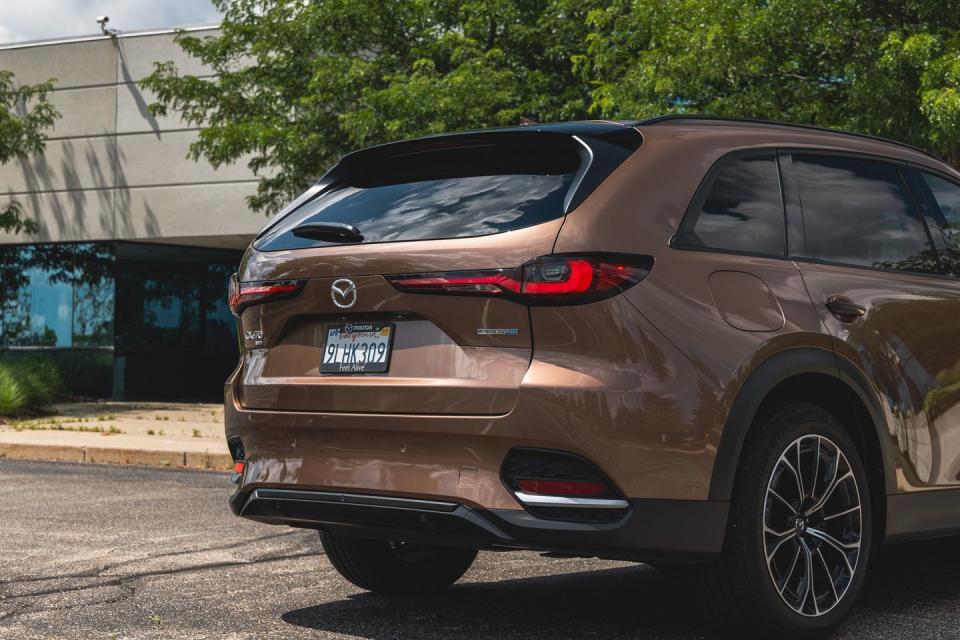
You Might Also Like

 Yahoo Autos
Yahoo Autos 